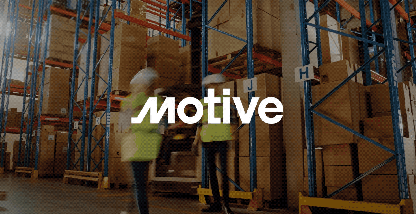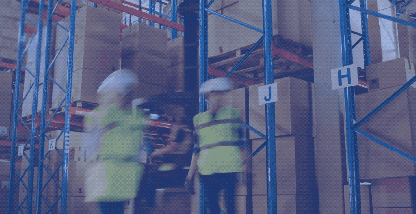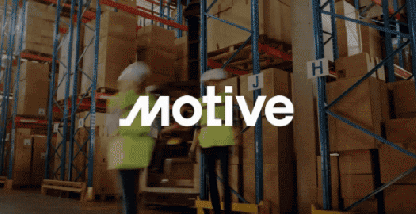Editor’s note: This is part two of a three-part series on supply chain challenges. Part one looks at challenges taking place at the Port of Long Beach. Part two explores challenges that truckers are facing and supply chain impacts in construction and oil and gas. Part three looks at the challenges that rail operators are confronting in rail yards around the country.
One recent weekend, Chicago, Illinois-based C&K Trucking flew two team members to Los Angeles, California to meet with a customer about the supply chain crisis. With the holidays approaching, the customer was concerned.
“The supply chain problems are so important to them that they wanted to be sure that freight would be moving and that merchandise would be in the stores before the holidays,” says Mike Burton, president of C&K Holdings, the parent company of C&K Trucking. “If that doesn’t show you how serious the supply chain issues are, nothing will.”
Solely focused on intermodal drayage, C&K Trucking, a Motive customer, finds itself entangled in the supply chain challenges. Drayage involves transporting goods over a short distance, from a ship to a warehouse, for example.
With 16 terminals throughout the United States, C&K Trucking relies on more than 900 trucks as it transports retail products from ports and rail yards to distribution centers around the country.
With backups at the nation’s ports and in the nation’s largest rail hub (Chicago), the C&K Trucking team is feeling the pressure of the supply chain bottleneck in its day-to-day operations.
“Our drivers are struggling to get in and out of the ports and rails,” Burton explains. “Once we do get into the ports and rails, there are so many containers that we struggle to get out. The yards are so congested. It’s like having a huge stack of Legos. You have to move five out of the way to get to one at the bottom.”
An international chassis shortage is creating inefficiencies for drivers
The most impactful problem for C&K Trucking’s drivers is a shortage of chassis. Normally, when a container gets taken off a ship, it gets stored in the terminal, where it is either loaded onto a rail car or matched to a truck driver. If the terminal is a grounded operation, once the container is matched to a driver, it has to be mounted onto a chassis.
Chassis enable truck drivers to transport the containers from dockside terminals to their destinations, be they at a warehouse, distribution center, retail center, or other location. With the shortage, chassis have become a rare find at U.S. ports.
“Most chassis are manufactured in China,” Burton says. “After the U.S. placed tariffs on goods from China a few years ago, China stopped sending chassis to the United States. Now we have a huge surge in the need for chassis, but we can’t get them. At C&K Trucking, we’ve ordered 200 chassis, and it’ll be six months before we get into the production schedule. If you have enough chassis, you can move containers off-site to decongest the ports or the rails. When you don’t have them, you have to go to the ground and stack containers.”
At America’s largest ports and in rail yards across the country, that is exactly what has happened. U.S. manufacturers are unable to produce enough chassis to meet demand, and the chassis that are available are already in use.
“Drivers used to wake up in the morning and deliver freight to customers,” Burton says. “Now they wake up and say, ‘Where am I going to find a chassis?’”
Supply chain crisis causing a major shortage of materials
Burton’s drivers are not alone. Supply chain disruptions are having a ripple effect that extends beyond trucking and train operators to the construction industry and oil and gas. As the oil and gas sector struggles to boost oil production to pre-pandemic levels, gasoline prices have risen to their highest level in seven years.
The national average for a gallon of diesel stands at $3.60, and prices continue to climb. In the early part of the pandemic, the gasoline market suffered as Americans stopped driving and demand for gasoline plummeted. With 2021 at a close, gasoline production hasn’t rebounded, even as demand for gas has returned.
According to the U.S. Energy Information Administration (EIA), U.S. crude oil prices averaged $81 per barrel in October, up $10 per barrel from September. President Biden announced the release of emergency oil reserves to drive down high energy prices ahead of the holiday travel season. However, it will be weeks before the 50 million barrels become available.
In construction, supply chain disruptions have led to an unprecedented shortage of materials. Material costs have soared in response, causing projects to be delayed or outright canceled due to scarcity and costs.
Building materials such as tile, flooring, steel, and lumber are heavily delayed or unavailable from global manufacturers, creating higher demand for them, and higher prices.
The shortage of steel is affecting construction and appliance manufacturing, making appliances hard to come by for new residential units under construction.
In a news release about supply chain impacts, the Associated General Contractors of America reports that rising material costs are starting to drive up construction costs. The price index for steel mill products more than doubled, soaring nearly 142% since October 2020.
The indexes for aluminum mill shapes and copper and brass mill shapes jumped more than 37% over 12 months, while the index for plastic construction products rose more than 30%.
“After being battered by unprecedented price increases for many materials, contractors are finally passing along more of their costs,” said Ken Simonson, the association’s chief economist, in the release. “Meanwhile, supply chain bottlenecks and labor shortages continue to impede contractors’ ability to finish projects.”
“Firms aren’t working, because there aren’t workers to do the work,” says Brian Turmail, AGC’s Vice President of Public Affairs and Strategic Initiatives. “The lack of workers has led to reduced productivity. People at every level of the construction industry are worried about how they’re going to attract workers. You can only work people on double-overtime for so long before they burn out.”
Companies are turning to technology to become more efficient in the face of supply chain fragmentation
According to Reuters, consumer spending remains strong, rising 0.6% in September after rebounding 1.0% in August. Last year’s surge in spending has resulted in more demand for U.S. workers to keep up with. In response, commercial fleets and construction firms are relying on technology to become more efficient however and whenever they can.
C&K Trucking takes a proactive approach to safety and operations, relying on Motive technologies to improve efficiency.
“Everyone in the transportation industry wants immediate updates and real-time visibility,” Burton says. “The more that drivers can use their Motive apps to update managers on their location, the more it helps us understand the magnitude of the problems that we’re dealing with.”
The Motive Vehicle Gateway gives C&K Trucking real-time visibility into the location of its vehicles. “We know when they arrive at a customer and when they’re at port,” Burton says. “We share that information accurately with our shippers and our customers, letting them know exactly when the shipment is timed to arrive.”
For construction, oil and gas, and trucking, tools such as the Motive AI Dashcam can create real-time visibility into vehicle safety, whether at a job site or on the docks. By alerting drivers to close following tendencies in real time, the AI Dashcam works to reduce accidents proactively.
In congested environments such as rail yards, ports, and construction sites, dashcams and the increased awareness they bring can keep workers alert, engaged, and protected.
The C&K team uses Motive’s road-facing dashcam to coach drivers on safe following distance, which becomes crucial when workers are waiting in long bottlenecks at ports and rail yards during the supply chain crisis.
“For our drivers who are constantly following too closely and hitting the brakes, we look for that pattern of hard braking then coach them on the need to keep a cushion of space around the vehicle,” Burton says. “Coaching on hard braking allows us to reduce close following habits and retain a strong stable of drivers as they develop their skills.”
During the national labor shortage, technology has become an important vehicle for productivity. With fewer people on hand to do the work, construction firms have ramped up their technology spending to become as productive as possible.
“A lot of technology is being developed to make the construction process more efficient, such as eliminating problems early in the construction process or making the construction site itself more efficient,” says the AGC’s Turmail.
Drones, for example, are being used to perform security surveillance, share aerial views with customers, and help crews take measurements in unsteady, hazardous conditions. Drones can be used to replace workers in high-risk situations, eliminating the likelihood of a worker falling and becoming injured.
“It might take three people to map out and survey every piece of a building under construction,” Turmail says. ”Instead, you could dispatch a drone for an hour and not tie up three people with a measuring tape all day.”
“No one wants the pandemic,” Turmail adds. “But it has made the decision to invest in new tech go from a nice-to-have to a must-have.” The same could be said for the supply chain crisis.
See how the supply chain crisis is impacting the nation’s ports in Motive’s exclusive interview with Noel Hacegaba, the Deputy Executive Director and COO at the Port of Long Beach.







